Exploring GPT and Large Language Models: The Future of Communication
Artificial intelligence (AI) has made significant strides over the past few years, and one of the most groundbreaking advancements is the development of Large Language Models (LLMs), such as OpenAI's GPT (Generative Pre-trained Transformer). These models are transforming the way we communicate, interact with technology, and even how we think about language itself. At the core of LLMs like GPT is the ability to understand and generate human-like text based on vast amounts of data and complex algorithms. GPT has revolutionized fields ranging from customer service and content creation to coding and language translation, pushing the boundaries of what machines can do in terms of human language. As these models continue to evolve, they are poised to change the very fabric of communication, opening up new possibilities for personal, professional, and societal interactions. In this blog, we will explore the potential of GPT and other LLMs, their applications, and how they are shaping the future of communication.
One of the most notable features of GPT is its ability to generate coherent and contextually relevant text from just a few words or prompts. By training on an enormous dataset that includes books, articles, websites, and more, GPT can understand the intricacies of human language, including grammar, tone, and nuances. This capability allows GPT to engage in conversations, write essays, summarize text, answer questions, and even create poetry or stories—all with an uncanny level of fluency. What sets GPT apart from earlier language models is its scale and depth. These models can now handle far more complex tasks and produce text that closely mimics human writing, often making it difficult to distinguish between machine-generated and human-generated content. As GPT and similar LLMs continue to improve, they are becoming essential tools for communication, making it easier to create and consume information across various platforms and industries.
The impact of GPT and LLMs extends far beyond just natural language generation. One of the most powerful applications of these models is in enhancing communication between humans and machines. Traditionally, interacting with technology involved understanding commands or using interfaces designed by humans. However, GPT has introduced a new paradigm—natural language processing (NLP). By allowing machines to understand and respond to human language in a conversational manner, GPT is enabling more intuitive and user-friendly interactions. This has profound implications for industries such as customer service, healthcare, and education. Virtual assistants powered by GPT can help customers troubleshoot issues, answer questions, or guide them through complex processes, all without the need for human intervention. In the healthcare sector, GPT models can assist medical professionals by interpreting medical texts, generating reports, or even engaging with patients in a natural, empathetic way. In education, these models can act as tutors, offering personalized learning experiences based on individual needs and preferences. As GPT continues to improve, the lines between human and machine communication will continue to blur, making interactions smoother and more efficient.
Another key area where GPT and LLMs are making a significant impact is in content creation and media. With the ability to generate high-quality, contextually relevant text, GPT is revolutionizing industries such as journalism, marketing, and entertainment. For example, journalists can use GPT to assist in writing articles, summarizing news reports, or conducting research more efficiently. Marketers can leverage the power of GPT to create engaging content for blogs, social media posts, and advertising copy, reducing the time and effort required for content creation. GPT can even generate creative pieces like poetry, stories, or scripts, making it a valuable tool for writers and artists. However, with the ability to generate vast amounts of content quickly, there are also concerns about authorship and authenticity. The potential for AI-generated content to flood the internet raises questions about the reliability and credibility of the information we encounter daily. As GPT and other LLMs continue to advance, it will be important to establish ethical guidelines and frameworks to ensure that AI-generated content is transparent, accurate, and does not mislead or deceive audiences.
The future of GPT and LLMs is incredibly exciting, with endless possibilities for how they can revolutionize communication in both personal and professional spheres. As AI models become more sophisticated, they will continue to play a central role in breaking down language barriers, enhancing accessibility, and enabling global collaboration. GPT and similar models have the potential to assist in real-time translations, making communication across languages seamless and efficient. This can have a profound impact on international relations, global business, and even social interactions. Additionally, as GPT becomes more integrated into daily life, it could contribute to more inclusive communication, empowering individuals with disabilities or those with limited access to education. AI-driven tools can provide personalized experiences, helping people navigate language challenges and engage in meaningful conversations regardless of their backgrounds or abilities.
In conclusion, GPT and large language models are transforming communication in ways we could only imagine a decade ago. By improving how humans interact with machines, enhancing content creation, and breaking down language barriers, these models are shaping the future of communication across industries and societies. As we continue to explore and refine these technologies, it is essential to consider their potential benefits and challenges. While GPT and LLMs offer unprecedented opportunities, they also raise important ethical and practical questions that will need to be addressed as the technology evolves. Ultimately, the future of communication is set to be more interactive, inclusive, and intelligent, thanks to the powerful capabilities of AI-driven language models.
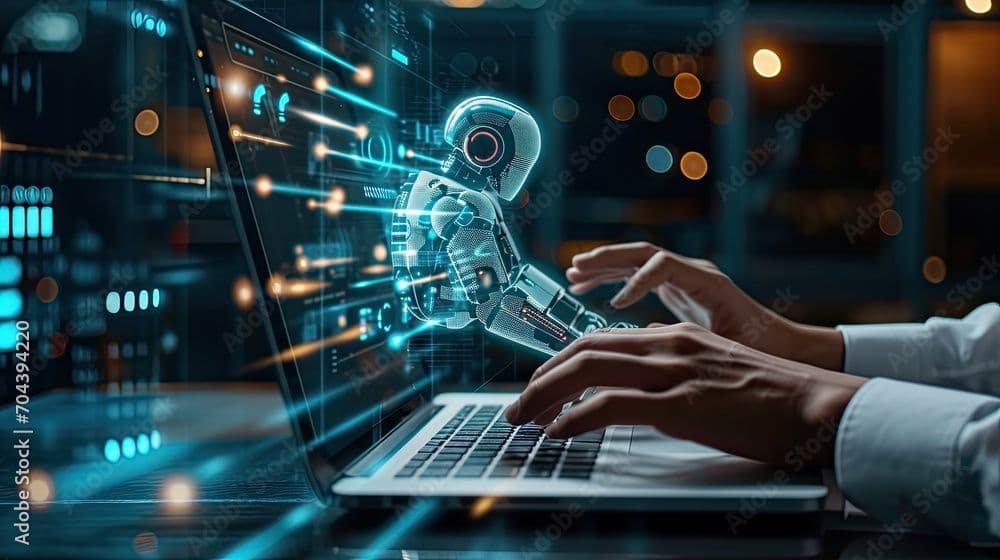
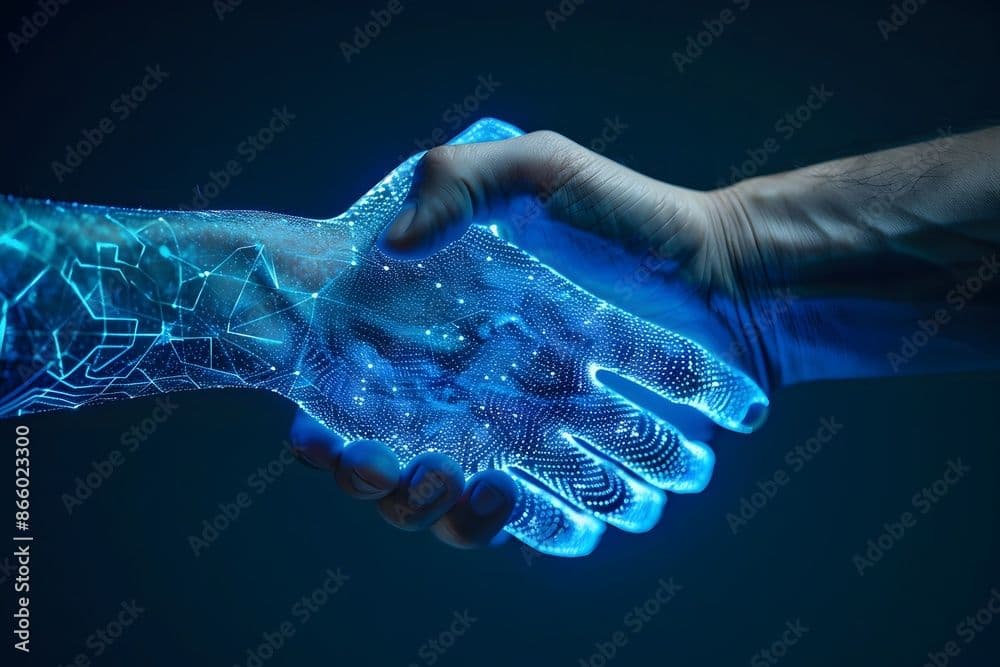
AI and Cybersecurity: Protecting Data in a Digital World
In today's increasingly connected world, where digital transformation is rapidly reshaping industries and society, cybersecurity has become one of the most critical concerns. With the rise of sophisticated cyberattacks, data breaches, and the growing threat of hacking, organizations and individuals alike are seeking advanced solutions to protect their sensitive data and maintain privacy. One of the most promising technologies in the battle against cyber threats is Artificial Intelligence (AI). AI’s ability to process vast amounts of data, detect patterns, and respond to threats in real-time is revolutionizing the way we approach cybersecurity. This blog explores the role of AI in cybersecurity, how it enhances data protection, and the future of AI-driven security systems.
AI plays a crucial role in strengthening cybersecurity by offering advanced threat detection and response capabilities. Traditional methods of identifying and combating cyber threats often rely on predefined rules and signatures, which can be slow to adapt to new and evolving threats. AI, on the other hand, can analyze vast amounts of network traffic, user behavior, and system activity to identify patterns and detect anomalies that may indicate a potential cyberattack. By leveraging machine learning (ML) algorithms, AI can continuously learn from historical data, enabling it to predict and recognize emerging threats in real-time. This proactive approach helps prevent attacks before they occur, providing a more dynamic and adaptable defense against hackers. For example, AI-driven systems can identify unusual behavior, such as unauthorized access to sensitive data or unusual login patterns, and automatically trigger alerts or block suspicious activities.
In addition to enhancing threat detection, AI also plays a vital role in incident response. Once a cyberattack has been identified, AI systems can quickly analyze the situation, assess the extent of the damage, and determine the most effective course of action. This can include automatically isolating affected systems, blocking malicious IP addresses, or implementing encryption to prevent data exfiltration. AI can also be used to automate certain aspects of the incident response process, reducing the time and human resources required to address the threat. By automating the analysis of attack vectors and identifying weaknesses in the system, AI helps security teams respond faster and more effectively, minimizing the damage caused by cyberattacks. Moreover, AI systems can continuously learn from new attack data, improving their ability to recognize and respond to future threats, which enhances overall security.
The integration of AI with cybersecurity also leads to the development of intelligent firewalls and intrusion detection systems (IDS) that can adapt to new and evolving threats. Traditional firewalls and IDS often rely on known patterns or predefined rules to detect malicious activity. However, these systems may fail to identify novel or highly sophisticated attacks. AI-driven firewalls and IDS, on the other hand, are capable of dynamic learning. By analyzing data in real-time and continuously updating their knowledge base, these systems can detect previously unknown threats and block malicious activities with greater precision. In addition, AI systems can help reduce the occurrence of false positives, which occur when benign activities are mistakenly flagged as threats, thereby improving the efficiency of security operations. As AI technologies advance, we can expect even more powerful and accurate security systems capable of defending against a wide range of cyber threats.
Looking to the future, the role of AI in cybersecurity will continue to expand, driven by advancements in machine learning, deep learning, and natural language processing (NLP). As cyber threats become more complex and sophisticated, AI will be essential in developing next-generation security systems that can not only respond to attacks but also predict and prevent them. For example, AI-powered predictive analytics will allow organizations to identify vulnerabilities in their infrastructure before they are exploited by hackers. Additionally, the rise of AI-powered autonomous systems could lead to fully automated cybersecurity defenses that can independently detect, analyze, and mitigate threats without human intervention. As cybersecurity becomes an increasingly critical concern in our digital world, AI will play a pivotal role in ensuring that data remains secure and that organizations can confidently navigate the ever-evolving landscape of cyber threats.
In conclusion, AI and cybersecurity are becoming inseparable partners in the fight against cyber threats and data breaches. AI’s ability to detect anomalies, predict emerging threats, and automate incident response is revolutionizing the way organizations protect their data and digital assets. From advanced threat detection to intelligent firewalls and intrusion detection systems, AI is enhancing every aspect of cybersecurity, providing organizations with more efficient and effective defenses. As the landscape of cyber threats continues to evolve, AI will remain at the forefront of cybersecurity innovation, ensuring that data stays protected in an increasingly connected and digital world. By combining the power of AI with traditional security measures, we are entering a new era of smart cybersecurity, where intelligent systems continuously adapt to defend against the ever-growing and ever-changing threats of the digital age.
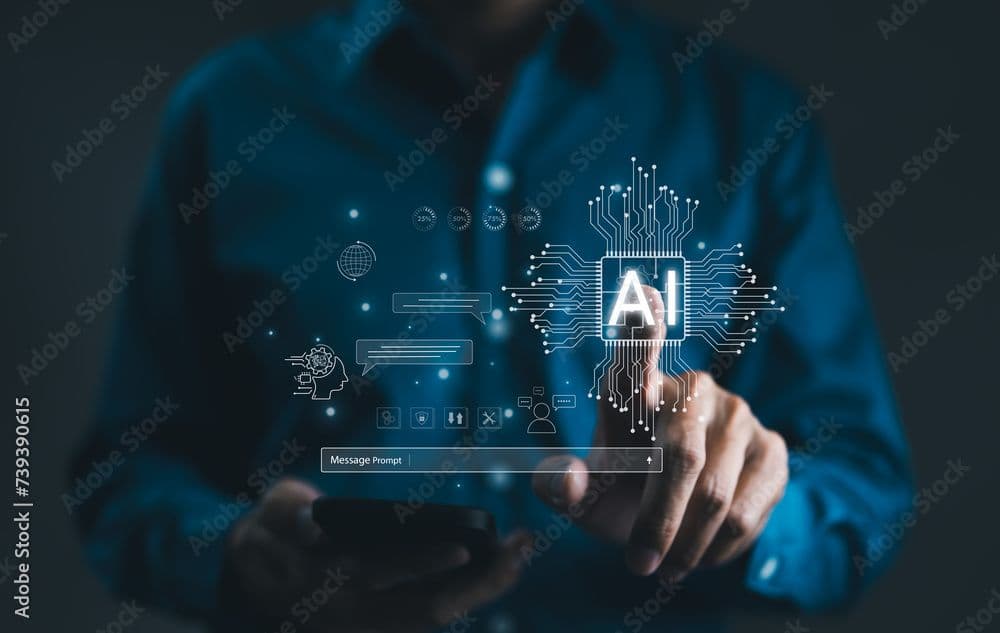
Combining AI with IoT: A New Era of Smart Technology
In recent years, the fields of Artificial Intelligence (AI) and the Internet of Things (IoT) have independently transformed the way we live, work, and interact with technology. However, when combined, these two powerful technologies unlock a whole new world of possibilities. The integration of AI with IoT has paved the way for the development of smart technologies that can learn from their environment, make decisions, and automate processes without human intervention. This fusion is creating a new era of intelligent systems that not only respond to real-time data but also predict future trends, optimize operations, and improve user experiences across various industries. In this blog, we will explore how AI and IoT complement each other, the impact of their combination on various sectors, and the future potential of this powerful synergy.
The Internet of Things (IoT) refers to the vast network of interconnected devices that collect, exchange, and transmit data over the internet. These devices, which include everything from smart thermostats and wearable health trackers to connected cars and industrial machines, generate massive amounts of data. On the other hand, Artificial Intelligence (AI) is responsible for processing and analyzing this data to extract meaningful insights, make predictions, and enable autonomous decision-making. When IoT devices are equipped with AI, they become intelligent systems capable of interpreting the data they collect and taking action based on that information. For example, in a smart home, an IoT-enabled thermostat can not only monitor the temperature but also learn the user’s preferences over time and adjust the heating or cooling automatically. By leveraging machine learning algorithms, the system can anticipate future temperature changes and optimize energy consumption, saving both energy and cost.
The combination of AI and IoT is having a profound impact on various industries. In healthcare, for example, IoT-enabled devices such as wearable health monitors can track real-time data, including heart rate, blood pressure, and activity levels. With AI, this data can be analyzed to detect early signs of health issues or predict potential medical conditions. AI can also automate alerts to healthcare providers when an anomaly is detected, allowing for faster interventions and personalized treatment plans. Similarly, in smart cities, IoT devices collect data on everything from traffic patterns and air quality to waste management and energy consumption. By applying AI algorithms to this data, city planners can optimize public services, reduce energy waste, and enhance the quality of life for residents. For instance, AI can help regulate traffic lights to improve traffic flow or predict power outages before they happen, ensuring a more efficient and sustainable urban environment.
Another key area where AI and IoT are making a significant impact is in manufacturing. The concept of a smart factory is becoming a reality thanks to the integration of IoT devices with AI-powered analytics. In these factories, IoT sensors monitor the health and performance of machines in real-time, collecting data on everything from temperature and vibration to machine speed and efficiency. AI systems can then analyze this data to detect potential issues, such as worn-out components or performance degradation, before they lead to costly breakdowns. This proactive maintenance approach, known as predictive maintenance, not only extends the lifespan of equipment but also reduces downtime and operational costs. AI-powered systems can also optimize production schedules, streamline supply chains, and improve quality control by analyzing large volumes of data to identify patterns and inefficiencies.
Looking ahead, the combination of AI and IoT holds immense potential to further revolutionize our world. As both technologies continue to evolve, their capabilities will only expand. For instance, AI-powered IoT systems will become even more autonomous, with the ability to make complex decisions and take actions with minimal human input. This could lead to fully automated homes, workplaces, and industries, where machines not only perform tasks but also learn from their environment to improve performance over time. In addition, the integration of 5G networks with AI and IoT will enable faster and more reliable communication between devices, leading to real-time decision-making and enhanced capabilities in areas like autonomous vehicles, smart grids, and supply chain management. Furthermore, advancements in edge computing will allow AI to process data closer to where it is generated, reducing latency and improving the responsiveness of IoT devices.
In conclusion, the convergence of AI and IoT is ushering in a new era of smart technology that is transforming the way we live, work, and interact with the world around us. By combining AI’s ability to process and analyze large volumes of data with IoT’s vast network of interconnected devices, we are creating intelligent systems that can make decisions, optimize operations, and improve user experiences in ways that were once unimaginable. From healthcare and smart cities to manufacturing and beyond, the impact of AI and IoT is already being felt across industries, and the future promises even greater innovations. As these technologies continue to evolve and mature, the possibilities for creating a smarter, more efficient, and more connected world are limitless.
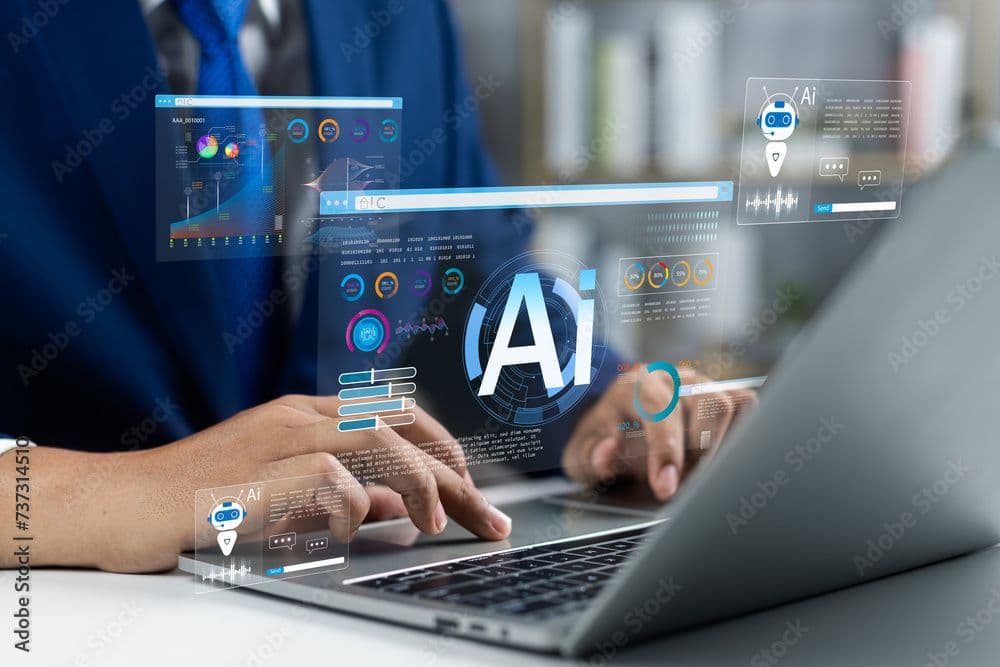
AI in Education: Personalized Learning for the Next Generation
Artificial Intelligence (AI) has made significant strides in recent years, not just in industries like healthcare, finance, and manufacturing, but also in the realm of education. AI is rapidly transforming how students learn, how teachers teach, and how educational content is created and delivered. One of the most profound impacts of AI in education is its ability to offer personalized learning experiences. By analyzing individual students’ learning styles, progress, strengths, and weaknesses, AI can adapt the educational experience to meet the unique needs of each learner. This approach promises to create more effective, engaging, and inclusive educational environments, catering to students of all abilities and backgrounds. In this blog, we will explore how AI is reshaping education, its role in personalized learning, and the future potential of AI in creating a more efficient and student-centered educational system.
One of the main benefits of AI in education is its ability to customize learning paths for each student. Traditionally, education has been a one-size-fits-all approach, where teachers deliver the same lessons to a classroom full of students. While this method works for some students, others may struggle to keep up or find the material too easy, leading to disengagement. AI-powered learning systems can analyze vast amounts of data to understand the unique learning preferences, behaviors, and capabilities of each student. For example, adaptive learning platforms powered by AI can modify the difficulty level of lessons based on a student’s performance. If a student excels in a particular subject, the system will provide more challenging material to keep them engaged. On the other hand, if a student is struggling, the system will offer additional resources, such as practice problems, explanations, or videos, to help them master the topic. This personalized approach ensures that every student receives the support they need to succeed at their own pace, promoting a deeper understanding of the material and fostering a love for learning.
AI also plays a critical role in providing immediate feedback and assessments to both students and teachers. Traditional assessment methods, such as quizzes and tests, often provide feedback after a delay, leaving students with limited opportunities to improve before the next test. AI-driven platforms can offer real-time feedback, allowing students to understand their mistakes instantly and make necessary adjustments to their learning strategies. For instance, when a student answers a question incorrectly, AI can immediately offer hints or explanations, helping the student to correct their mistake before it becomes a larger gap in their understanding. This continuous feedback loop enables students to learn more efficiently and encourages self-directed learning. For teachers, AI can help identify trends and patterns in student performance, providing insights into which students need additional support, which areas of the curriculum may require further emphasis, and how to adjust teaching strategies for better outcomes. This data-driven approach not only improves student learning outcomes but also makes teachers’ work more efficient and effective.
In addition to personalized learning, AI is revolutionizing the way educational content is created and delivered. AI tools can help educators design more engaging and interactive lessons by incorporating multimedia elements such as videos, animations, and simulations. These tools can also adapt content in real-time based on student responses, ensuring that the material remains engaging and relevant. For example, AI-powered platforms can create interactive quizzes, simulations, and virtual environments that allow students to explore subjects in a hands-on, immersive way. In subjects like science and engineering, virtual labs powered by AI can simulate experiments and processes that might not be feasible in a traditional classroom setting. Moreover, AI can be used to create intelligent tutoring systems, where students can receive one-on-one support and guidance in subjects they are struggling with, without requiring additional teachers or tutors. This accessibility makes learning more interactive, dynamic, and tailored to the needs of each student.
The future of AI in education is promising, with continuous advancements expected to further enhance personalized learning and improve educational outcomes on a global scale. As AI technology becomes more sophisticated, its applications in education will likely expand to include more complex tasks such as emotion recognition and learning style analysis. For example, AI systems may be able to detect when students are feeling frustrated, bored, or disengaged based on their facial expressions or patterns of interaction, and adjust the content or learning environment to improve their experience. Furthermore, AI has the potential to bridge educational gaps in underserved areas by providing access to high-quality learning materials and instruction remotely. In countries or regions where access to qualified teachers is limited, AI-powered tools can offer students the opportunity to learn at their own pace, even in areas with few educational resources. As AI continues to evolve, it will play a central role in making education more inclusive, accessible, and personalized, helping to shape the next generation of learners for an increasingly complex and digital world.
In conclusion, AI in education holds immense potential to revolutionize how we teach, learn, and interact with educational content. By personalizing learning experiences, providing real-time feedback, and enabling more engaging and interactive lessons, AI is making education more efficient, effective, and accessible than ever before. The ability to tailor learning to each student’s needs ensures that every learner can achieve their full potential, regardless of their background or abilities. As AI continues to evolve, its impact on education will only grow, making the educational experience more personalized, inclusive, and effective. The future of education is one where AI plays a central role in fostering creativity, critical thinking, and lifelong learning, preparing students for success in an ever-changing world.
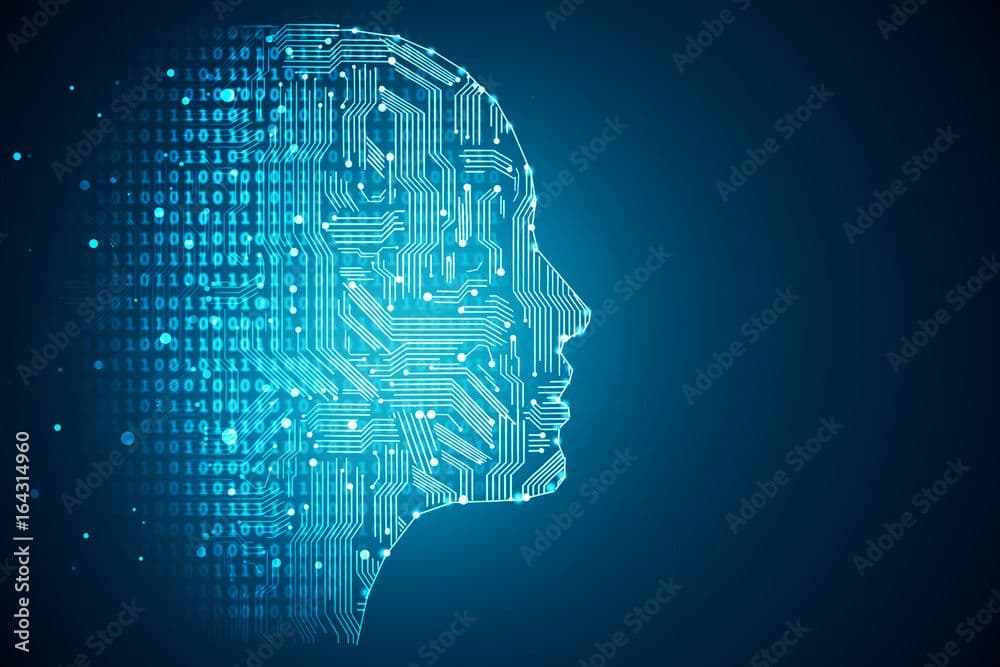
The Rise of Artificial Intelligence: Transforming Our Future
Artificial Intelligence (AI) is no longer just a concept from science fiction; it has become a central force shaping the future of technology and society. From self-driving cars to voice assistants like Siri and Alexa, AI is influencing almost every aspect of modern life. It refers to the ability of machines and computers to perform tasks that would typically require human intelligence, such as decision-making, language understanding, and pattern recognition. AI systems can analyze massive amounts of data, learn from patterns, and improve their performance over time, making them invaluable tools in solving complex problems that humans alone cannot handle as efficiently.
The rise of AI has already led to significant advancements in various industries. In healthcare, AI is being used to analyze medical images, predict disease outcomes, and assist in drug discovery, all of which are revolutionizing the way we approach treatment and care. Similarly, AI in finance helps detect fraudulent activities, assess risks, and manage investments with better accuracy. Industries like retail, manufacturing, and logistics have also embraced AI for optimizing processes, predicting demand, and improving customer experiences through personalized recommendations and automated services. With AI's increasing role, businesses are becoming more efficient, while consumers are experiencing more tailored interactions with technology.
As AI continues to grow, the ethical implications and challenges surrounding its development are also gaining attention. There are concerns about job displacement, privacy issues, and the potential misuse of AI systems in surveillance or autonomous weapons. The technology has the power to reshape entire economies and labor markets, leading to discussions about the need for upskilling the workforce and preparing for an AI-driven future. Furthermore, ensuring that AI systems are transparent, unbiased, and used responsibly is a significant priority for governments and tech companies alike, as they seek to mitigate risks while embracing the benefits of this powerful tool.
Looking ahead, AI is poised to transform our future in ways that are difficult to fully predict. Its ability to augment human capabilities and tackle challenges across sectors like climate change, space exploration, and education positions AI as a key driver of innovation. The question now lies not in whether AI will continue to evolve but in how society can harness its potential responsibly, ensuring that it benefits everyone and creates a future where technology complements human intelligence for a better, more sustainable world.
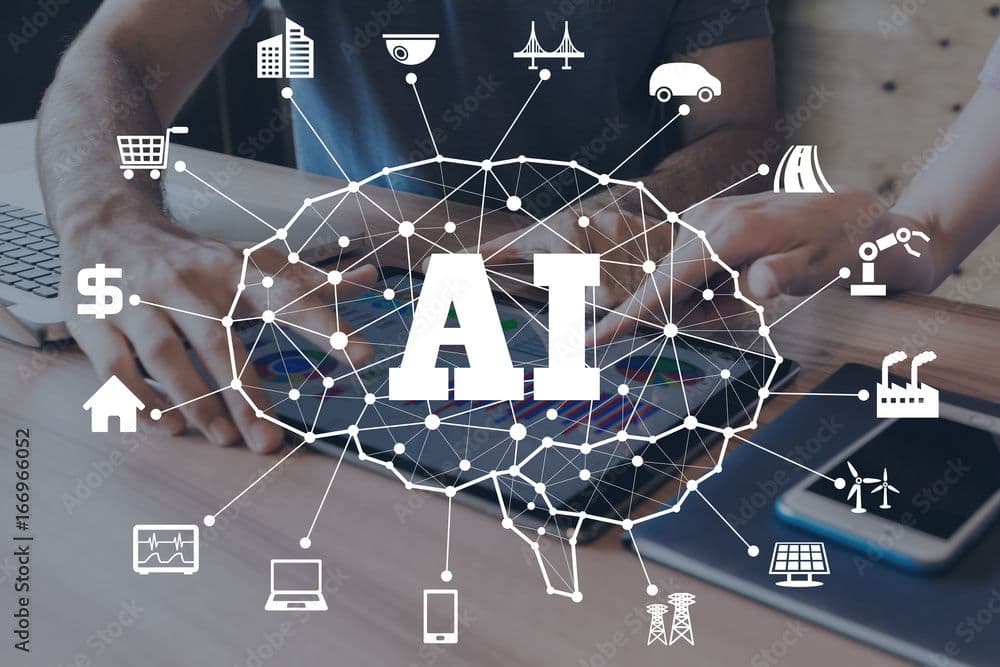
AI in Everyday Life: How It's Changing the Way We Live
Artificial Intelligence (AI) is no longer a futuristic concept; it has become an integral part of our daily lives, influencing the way we live, work, and interact with technology. From the smartphones we use to the smart devices in our homes, AI plays a pivotal role in making our lives more convenient, efficient, and personalized. Whether it's through virtual assistants like Siri and Alexa that respond to voice commands or the recommendation algorithms that suggest movies and music based on our preferences, AI enhances everyday experiences in subtle yet impactful ways. Its presence is felt in nearly every industry, and its role in shaping modern life continues to grow.
In the world of communication, AI has revolutionized how we interact with technology and each other. Virtual assistants are now capable of understanding and responding to human speech, making tasks like setting reminders, sending messages, or controlling smart home devices as simple as a voice command. AI-powered chatbots provide instant customer support on websites and apps, helping users get the information they need in real-time. In social media, AI curates personalized content feeds based on users' behavior, ensuring that the information we see is tailored to our interests. AI's ability to understand natural language and predict user behavior has reshaped how we consume media, connect with others, and engage with online platforms.
The impact of AI extends beyond communication and into sectors like healthcare, transportation, and education. In healthcare, AI-driven applications assist doctors by analyzing medical data, identifying patterns, and even predicting potential health issues before they arise. Wearable devices like fitness trackers use AI to monitor physical activity, heart rate, and sleep patterns, helping users maintain healthier lifestyles. In transportation, self-driving cars and AI-based traffic management systems promise to make roads safer and reduce congestion. Education has also seen AI integration, with personalized learning platforms adapting to individual students' needs, helping them progress at their own pace. These advancements demonstrate how AI enhances efficiency, safety, and personalization in crucial areas of life.
As AI continues to evolve, its influence on everyday life will only increase. With smart cities, AI is playing a role in urban planning, optimizing energy usage, and improving public services like waste management and transportation. In retail, AI is transforming how we shop by providing personalized product recommendations, managing inventory, and even predicting future consumer trends. At home, smart appliances powered by AI make everyday tasks like cooking, cleaning, and home security more efficient and intuitive. While concerns around privacy, ethics, and the societal implications of AI remain important, the undeniable benefits of AI in simplifying and enriching our daily lives ensure that it will continue to shape the future.
In conclusion, AI has become an indispensable part of everyday life, driving innovation in how we communicate, work, and maintain our well-being. Its ability to analyze vast amounts of data, learn from human interactions, and improve processes has led to smarter homes, more efficient workplaces, and better healthcare. As AI technology continues to evolve, its impact will expand, further transforming the way we live. The future of AI holds immense potential, and as long as we continue to harness it responsibly, it promises to make our daily experiences more seamless, intelligent, and enriching.
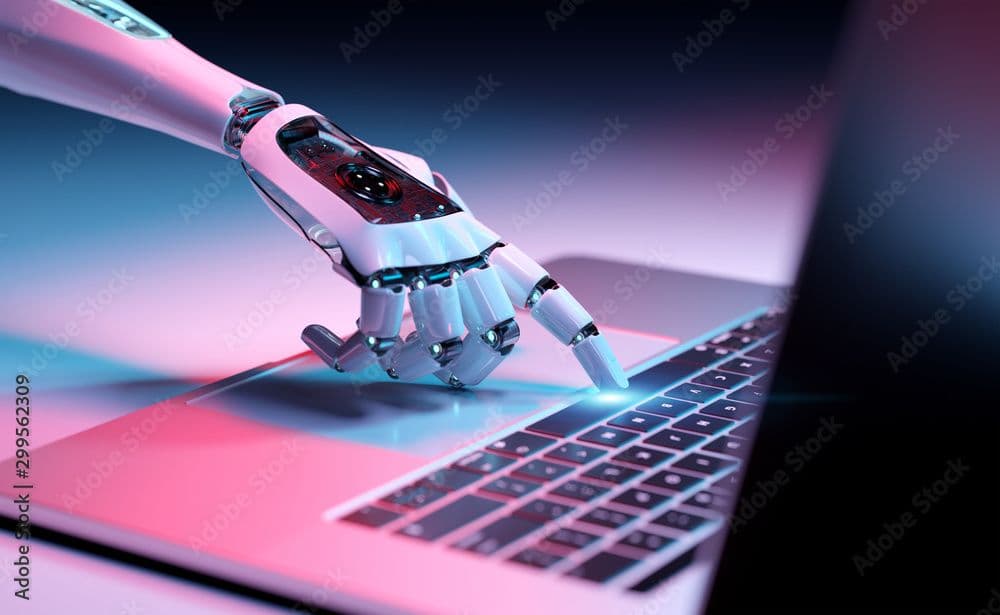
Understanding Machine Learning: A Beginner's Guide
Machine Learning (ML) is a fascinating subset of Artificial Intelligence (AI) that focuses on teaching computers to learn from data and make predictions or decisions without being explicitly programmed. At its core, machine learning involves using algorithms to identify patterns in data, enabling systems to improve their performance over time. This approach differs from traditional programming, where developers write specific instructions for tasks. Instead, machine learning models "learn" from examples and adjust their behavior based on experience, making them highly effective for tasks like image recognition, speech processing, and recommendation systems. With the rise of big data and powerful computing resources, machine learning has become a driving force behind many of the technologies we use daily.
There are three primary types of machine learning: supervised learning, unsupervised learning, and reinforcement learning. In supervised learning, the model is trained on a labeled dataset, meaning it knows the correct answers or outcomes for the data during training. The model learns to map inputs to outputs, and once trained, it can predict outcomes for new, unseen data. Supervised learning is widely used in applications like spam detection in emails and predicting house prices. Unsupervised learning, on the other hand, works with unlabeled data. The algorithm searches for patterns, relationships, or groupings within the data without knowing the correct answers beforehand. This approach is often used in clustering tasks, such as customer segmentation or anomaly detection. Reinforcement learning, the third type, involves training models through trial and error, where they learn to make decisions based on rewards and penalties. This method is commonly used in robotics and game AI.
A key component of machine learning is the training process, which involves feeding the model a dataset, allowing it to adjust its internal parameters to minimize error. Once trained, the model's performance is evaluated on new data, and adjustments can be made to improve accuracy. During training, a common issue that arises is overfitting, where the model learns the training data too well, including noise and irrelevant details, which makes it less effective when applied to new data. Techniques like cross-validation, regularization, and pruning are used to combat overfitting and improve generalization. Another important aspect is feature selection, where the most relevant variables in a dataset are chosen to train the model, improving performance and reducing complexity.
Machine learning has countless real-world applications that are transforming industries. For example, in healthcare, machine learning algorithms are used to analyze medical images, predict patient outcomes, and recommend personalized treatment plans. In finance, machine learning models detect fraudulent transactions, optimize stock trading strategies, and assess credit risk. E-commerce platforms use recommendation systems powered by machine learning to suggest products based on user behavior. Autonomous vehicles rely on machine learning to navigate and make decisions in real time. As the technology continues to advance, the potential applications of machine learning will expand further, offering new opportunities for innovation in various fields.
In conclusion, machine learning is a powerful tool that enables computers to learn from data and make informed decisions. Its ability to identify patterns, predict outcomes, and adapt to new information has made it indispensable in fields ranging from healthcare and finance to entertainment and transportation. For beginners, understanding the basics of machine learning—its types, training process, and real-world applications—provides a strong foundation for exploring this rapidly evolving technology. As more industries adopt machine learning to solve complex problems and enhance efficiency, its influence will continue to grow, shaping the future of how we interact with technology.
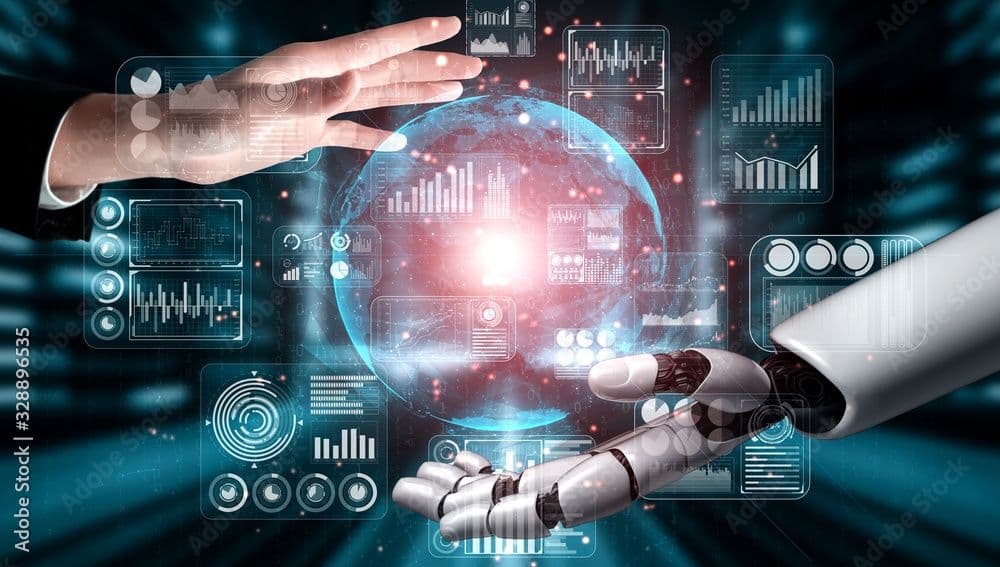
AI and the Future of Work: Automation and Its Impact
Artificial Intelligence (AI) is rapidly reshaping the landscape of work, with automation playing a central role in transforming industries, professions, and the very nature of employment. Automation, powered by AI and machine learning, is capable of performing tasks that were once exclusively the domain of humans. From manufacturing assembly lines to customer service and even creative fields like journalism and design, AI-driven systems are now handling a wide range of jobs with efficiency, accuracy, and speed. As automation technology continues to evolve, businesses are adopting it to streamline operations, reduce costs, and increase productivity, leading to a major shift in the workforce.
One of the most significant impacts of AI-driven automation is the displacement of jobs, particularly in sectors that rely on repetitive or manual tasks. Jobs in manufacturing, transportation, and retail are among those most vulnerable to automation, as robots, autonomous vehicles, and AI-powered platforms take over roles that involve routine, predictable tasks. For example, self-checkout machines in retail stores, autonomous trucks in logistics, and robotic assembly arms in factories are already replacing human workers. However, this shift also opens up opportunities for workers to transition into more creative, analytical, and managerial roles, where human ingenuity, emotional intelligence, and problem-solving skills are irreplaceable.
While AI-driven automation raises concerns about job displacement, it is also creating new job opportunities, especially in technology, data science, and AI-related fields. As companies adopt AI technologies, the demand for professionals who can develop, manage, and maintain these systems is increasing. AI specialists, data scientists, and machine learning engineers are in high demand to build and optimize AI algorithms, ensuring they function effectively and ethically. Additionally, new roles are emerging in sectors like healthcare, where AI is being used to assist doctors in diagnosis and treatment, as well as in education, where personalized learning tools driven by AI are transforming how students learn. In this evolving landscape, reskilling and upskilling the workforce becomes crucial to ensure that workers are prepared for the jobs of the future.
Looking ahead, the impact of AI on the future of work will depend on how businesses, governments, and society at large adapt to these changes. While automation has the potential to increase efficiency and productivity, it also poses ethical and social challenges, such as income inequality and the concentration of wealth in AI-driven industries. Governments and organizations must develop policies to support workers affected by automation, including investment in education and retraining programs. Additionally, fostering a culture of lifelong learning will be key to ensuring that workers can continually adapt to technological advancements. As AI reshapes the workforce, the goal should be to strike a balance between leveraging automation for economic growth and ensuring that workers are empowered to thrive in an AI-driven world.
In conclusion, AI and automation are fundamentally changing the way we work, presenting both challenges and opportunities. While job displacement is a concern, automation also opens doors to new roles that require creativity, innovation, and human empathy. As AI becomes more integrated into the workforce, the emphasis on reskilling and adapting to new technologies will be essential. The future of work will be defined by how well society navigates the balance between embracing AI's potential and ensuring that workers are supported in this transformation. By focusing on innovation, education, and inclusivity, we can create a future where humans and AI work together to build a more efficient, equitable world.
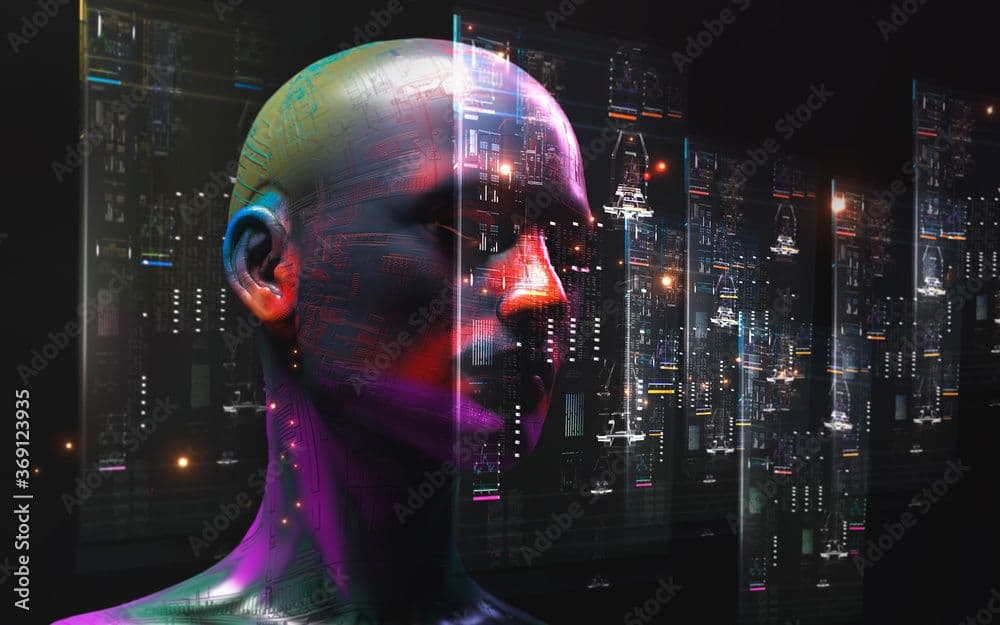
Ethics in AI: Balancing Innovation and Responsibility
As Artificial Intelligence (AI) continues to advance at an unprecedented pace, the ethical implications surrounding its development and deployment have become increasingly important. AI holds immense potential to revolutionize industries, from healthcare and education to finance and transportation, but with this power comes the responsibility to ensure that these technologies are used in ways that benefit society without causing harm. Ethical concerns in AI cover a wide range of issues, including bias in algorithms, privacy violations, job displacement, and the use of AI in surveillance or autonomous weapons. The challenge lies in balancing the pursuit of innovation with the need for responsible development and deployment of AI systems.
One of the most pressing ethical issues in AI is the potential for bias in algorithms. AI systems learn from data, and if the data used to train these systems contains biases—whether related to race, gender, socioeconomic status, or other factors—those biases can be perpetuated and even amplified by AI. For instance, facial recognition software has been shown to have higher error rates for people with darker skin tones, and hiring algorithms can unintentionally favor certain demographics over others. Addressing bias in AI requires a concerted effort from developers to ensure diverse, representative datasets, as well as transparency and accountability in the design of algorithms. By creating systems that are fair and inclusive, we can work towards reducing the impact of bias and ensuring that AI serves all members of society equitably.
Another significant ethical concern is privacy. As AI systems collect and process vast amounts of personal data, concerns about how that data is used, stored, and shared are becoming more pronounced. AI-powered applications, from social media platforms to voice assistants, often collect sensitive information, such as location data, browsing history, and personal preferences. Without proper safeguards, this data can be exploited for malicious purposes or used to manipulate individuals. To address privacy concerns, strong data protection laws and ethical guidelines must be established. Developers and organizations must implement privacy-by-design principles, ensuring that data is anonymized, encrypted, and used in ways that respect individuals' rights. Transparent policies and user consent are also crucial in maintaining trust in AI technologies.
While AI has the potential to drive economic growth and improve quality of life, it also presents challenges related to job displacement. As automation powered by AI systems continues to replace tasks traditionally performed by humans, there are concerns about the future of work. Industries like manufacturing, retail, and transportation are already witnessing significant shifts, with jobs being automated at a rapid rate. While new roles may emerge in technology, AI development, and data science, there is a need for retraining and reskilling programs to help workers transition to new opportunities. Policymakers and businesses must collaborate to create a social safety net for those impacted by automation and ensure that the benefits of AI are shared broadly across society. Additionally, ethical considerations in AI should include the long-term impact of technology on employment, mental health, and overall well-being.
As AI continues to shape our future, it is essential that we adopt a framework for responsible AI development. This includes fostering transparency in AI systems, where developers and organizations openly communicate how decisions are made and what data is used. It also involves creating ethical guidelines that prioritize the well-being of individuals and society as a whole. Furthermore, AI should be developed with a clear understanding of its limitations, ensuring that it is used in ways that are safe, ethical, and aligned with human values. Engaging diverse stakeholders—including ethicists, policymakers, and the public—in the development process will be key to ensuring that AI is used responsibly. By balancing innovation with ethical responsibility, we can create a future where AI serves humanity’s best interests and contributes to a more just, equitable, and sustainable world.
In conclusion, the ethics of AI are fundamental to ensuring that the technology is used for good. While AI holds the potential to revolutionize industries and improve lives, it also brings with it significant challenges that must be addressed in a responsible and thoughtful manner. By focusing on issues like bias, privacy, job displacement, and accountability, we can work towards a future where AI is developed and deployed in ways that benefit all of humanity. Striking the right balance between innovation and responsibility will be essential as we move forward in an AI-driven world.
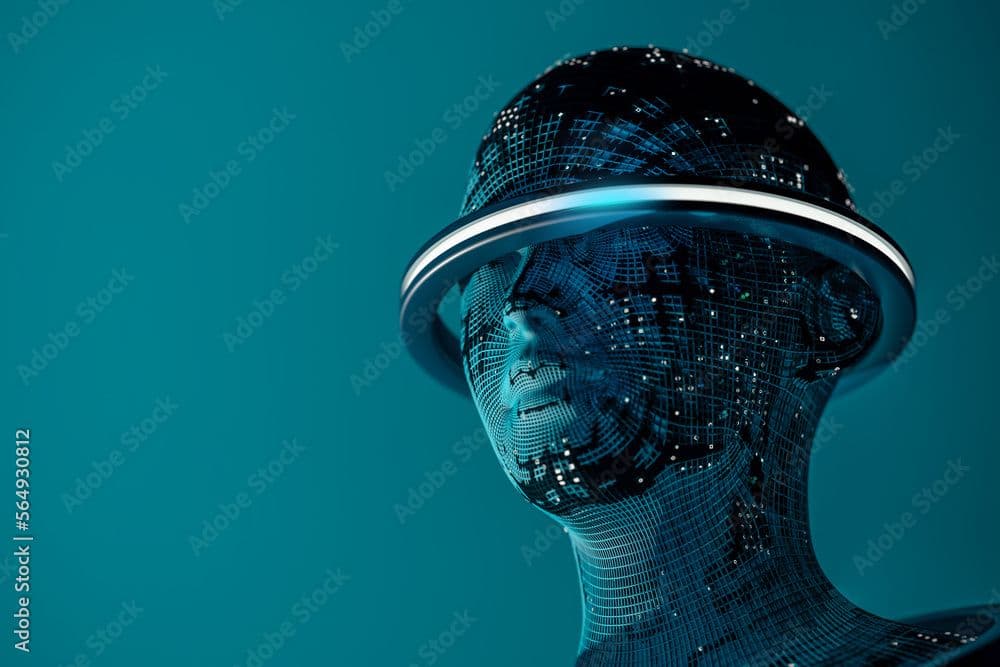
The Role of AI in Healthcare: Revolutionizing Medicine
Artificial Intelligence (AI) is rapidly transforming healthcare, offering new solutions to longstanding challenges in the medical field. From early diagnosis to personalized treatment plans, AI has the potential to revolutionize medicine, improving patient outcomes and enhancing the efficiency of healthcare systems. By leveraging vast amounts of medical data and advanced algorithms, AI systems can identify patterns, predict health risks, and assist healthcare professionals in making informed decisions. AI is not only streamlining administrative tasks, such as patient record management and appointment scheduling, but is also making significant strides in more complex areas like diagnostics, treatment recommendations, and drug discovery. As AI continues to evolve, its integration into healthcare promises to bring about groundbreaking changes that will shape the future of medicine.
One of the most significant applications of AI in healthcare is in diagnostic accuracy. AI algorithms can analyze medical images, such as X-rays, MRIs, and CT scans, with remarkable precision, often outperforming human radiologists in detecting certain conditions. For instance, AI-powered systems can detect early signs of diseases like cancer, heart disease, and neurological disorders, allowing for earlier intervention and improved outcomes. In addition to medical imaging, AI is also used in genetic analysis, where it can identify genetic markers linked to inherited conditions, enabling personalized medicine approaches. The ability to analyze large datasets quickly and accurately allows AI to assist doctors in diagnosing conditions that may be missed through traditional methods, enhancing the overall quality of care.
Another area where AI is making an impact is in personalized medicine. AI systems can process vast amounts of patient data, including medical history, genetic information, and lifestyle factors, to create tailored treatment plans that are specifically designed for individual patients. This personalized approach is especially beneficial in fields like oncology, where AI can help identify the most effective treatments based on a patient’s unique genetic profile. Additionally, AI can assist in predicting patient responses to certain medications, reducing the trial-and-error process that often accompanies drug prescriptions. As AI continues to improve, the potential for more precise and effective treatments grows, offering patients the best possible care based on their specific needs.
Beyond diagnostics and treatment planning, AI is also playing a pivotal role in drug discovery. The traditional process of developing new drugs is time-consuming, expensive, and fraught with challenges. AI has the ability to accelerate this process by analyzing large datasets to identify potential drug candidates more efficiently. Machine learning algorithms can predict how different compounds will interact with specific diseases, speeding up the identification of promising treatments. In some cases, AI has already been used to design new drugs, including those for diseases like COVID-19. By reducing the time and cost associated with drug development, AI is paving the way for more rapid breakthroughs in medicine, potentially saving lives and improving global health outcomes.
In conclusion, AI is revolutionizing healthcare by improving diagnostics, personalizing treatment plans, and accelerating drug discovery. Its ability to analyze large volumes of data and identify patterns has the potential to enhance the accuracy of medical decisions and lead to more effective treatments. As AI technologies continue to evolve, the future of medicine looks promising, with the potential for improved patient outcomes, more efficient healthcare systems, and groundbreaking advances in medical research. While challenges related to data privacy, ethics, and implementation remain, the role of AI in healthcare is undeniably transformative, offering new possibilities for the future of medicine.